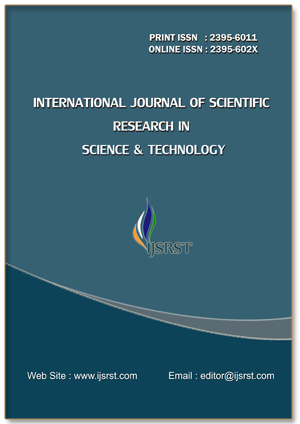Analysis of the Effect of Irradiation Projection on the Signal-to-Noise Ratio in Mammography Images
DOI:
https://doi.org/10.32628/IJSRST25123089Keywords:
Mammography, Radiation Projection, Signal to Noise Ratio (SNR), Region of Interest (ROI), Image QualityAbstract
Mammography is a special type of radiography for the breast, to increase the contrast in breast images, mammography uses much lower X-ray energy compared to general radiography. Mammography is the best technology available for early detection of breast cancer. Image quality is one of the main things to consider in viewing the quality of mammography. This study aims to analyze the effect of radiation projection on image quality in mammography images using the Signal to Noise Ratio (SNR) parameter so as to produce the highest Signal to Noise Ratio (SNR) value for Mediolateral oblique (MLO) and Craniocaudal (CC) radiation projections. The study was conducted based on secondary data from mammography examinations of Right-Craniocaudal (RCC), Left-Craniocaudal (LCC), Right-Mediolateral oblique (RMLO), and Left-Mediolateral oblique (LMLO) radiation projections at Persahabatan Hospital, the exposure factor chosen was the exposure factor that had the most data, namely at a tube voltage of 28 kV. The results of the study showed that the overall average SNR results were obtained for each projection, namely the highest SNR value of 10,68 in the Left-Craniocaudal projection, while the lowest SNR was 8,84 in the Right-Mediolateral oblique projection. The CC projection provided images with higher SNR values, resulting in better image quality, while the MLO projection was still needed to obtain wider breast tissue coverage.
📊 Article Downloads
References
Abdellatif, H., Taha, T. E., El-Shanawany, R., Zahran, O., & Abd El-Samie, F. E. (2022). Efficient ROI-based compression of mammography images. Biomedical Signal Processing and Control, 77, 103721.
Pape, R., Spuur, K. M., Wilkinson, J. M., & Zuhukepe, A. (2022). A review of mammographic image quality in Papua New Guinea. Journal of Medical Radiation Sciences, 69(1), 24–29
Kusumaningsih, L. P. R., Suryatika, I. B. M., Trisnawati, N. L. P., & Irhas, R. (2023). Pengaruh Slice Thickness terhadap Signal to Noise Ratio (SNR) dari Hasil Penyinaran CT Scan di RSUP Prof. Dr. I.G.N.G Ngoerah. Kappa Journal, 7(2), 326–330.
Louk, A. C., & Suparta, G. B. (2014). Pengukuran Kualitas Sistem Pencitraan Radiografi Digital Sinar-X.
Albeshan, S. M., Alashban, Y., Al Tahan, F. M., Al-enezi, S., Alnaimy, N., Shubayr, N., & Eliraqi, F. (2022). Mammography image quality evaluation in breast cancer screening: The Saudi experience. Journal of Radiation Research and Applied Sciences, 15(4), 100467.
Alukić, E., Homar, K., Pavić, M., Žibert, J., & Mekiš, N. (2023). The impact of subjective image quality evaluation in mammography. Radiography, 29(3), 526–532.
Sari, A. W., & Fransiska, E. (2018). Pengaruh Faktor Eksposi dengan Ketebalan Objek pada Pemeriksaan Foto Thorax Terhadap Gambaran Radiografi. Journal of Health, 5(1), 17.
Whitley, A. S., & Clark, K. C. (Eds.). (2005). Clark’s positioning in radiography (12th ed). Hodder Arnold ; Distributed in the U.S. of America by Oxford University Press.
Foroulis, C.N., & Zarogoulidis, P. 2012. Nuclear Medicine Imaging in the Evaluation of the Thyroid Nodule. In A. Margariti (Ed.), Thyroid Disorders: Focus on Hyperthyroidism (pp. 169-176). InTech.
Downloads
Published
Issue
Section
License
Copyright (c) 2025 International Journal of Scientific Research in Science and Technology

This work is licensed under a Creative Commons Attribution 4.0 International License.
https://creativecommons.org/licenses/by/4.0




